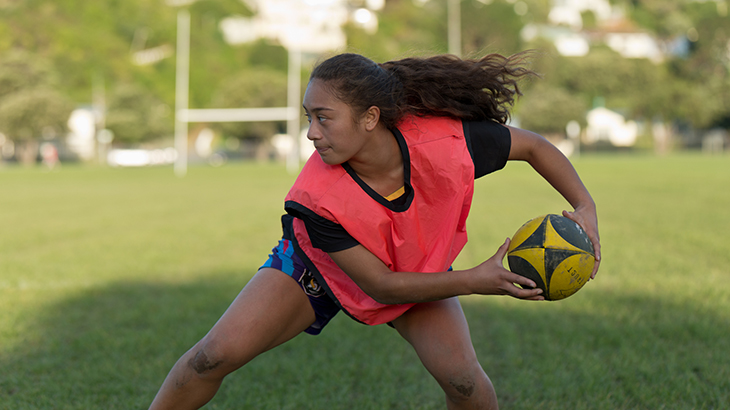Fewer injuries suffered on the rugby field: Here’s why

Injury prevention programme RugbySmart is proving its effectiveness in reducing injuries on the field.
The RugbySmart programme is reducing the number of injuries occurring during a game of rugby, according to new research.
Serious injuries from scrums have dropped by more than 90% following the introduction of the programme in 2001 and have remained low.
This finding comes from new research we’ve conducted with New Zealand Rugby (NZR). It pinpoints the most common types of injuries for each age range.
These new insights will help further reduce injuries at every level of the game.
Isaac Carlson, head of Injury Prevention at ACC, says he’s excited about how this new research can be applied to further reduce injuries and ultimately an increase in participation.
"RugbySmart is recognised internationally as a world-leading rugby injury prevention programme and we’re really proud of the success we’ve achieved with New Zealand Rugby. Now with the latest research we’re able to target our programmes and interventions to reduce the frequency and impact of injuries."
RugbySmart is a programme created by New Zealand Rugby and ACC.
Key findings
Soft tissue injuries make up
Concussions make up
Players aged 5 to 40 made
Here’s some of the key findings from the research:
- The injury rates for kids are much lower than for adults. Those over 18 are four times more likely than under 18s to have an injury.
- A player aged between 13 and 17 could expect to make about one claim every three years for any injury. If that injury was a fracture or dislocation, it would be about once every 30 years.
- Injury rates are low for 7 to 12-year-olds. About 8% of players can expect to make a claim each year.
- Female players generally have lower rates of injury than male players.
Comparing registered players and injury statistics
The research is a world-first. It provides a snapshot of New Zealand’s rugby playing population highlighting the common injuries for players by age and stage.
It compared NZR’s database of registered players with our injury statistics over a 12-year-period.
Dr Ken Quarrie, New Zealand Rugby chief scientist, says the insights would help NZR and ACC target the right audiences with the right interventions to help minimise the risk of injuries.
"While our goal will always be to have more kids playing and enjoying rugby, we’re continually looking to improve how we make the game safer. Combining data from ACC and New Zealand Rugby helps us to manage the risks in rugby – it feeds into our guidance on laws, our offering of non-contact forms of the game, and our education programmes.
"RugbySmart is now the longest running, compulsory nationwide sports injury prevention programme in the world. We’re proud we’re ahead of the game and that other rugby nations are interesting in what we’re doing."
According to Dr Martin Raftery, World Rugby medical director, this is the largest piece of research on community rugby injuries published anywhere in the world.
"It provides significant new information about the injury epidemiology of community rugby players and highlights the differences in injury rates between genders and age groups."
Further information
The original research article is available online.
A complimentary research paper demonstrates the success of RugbySmart.




